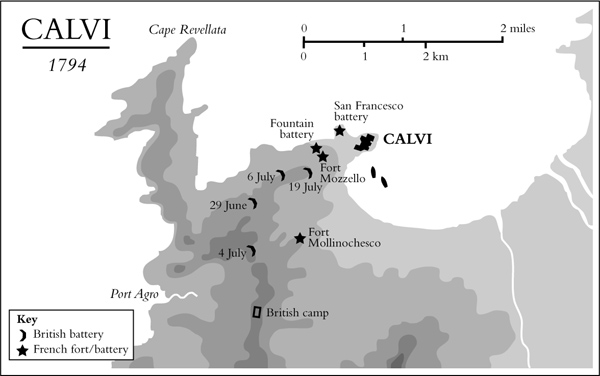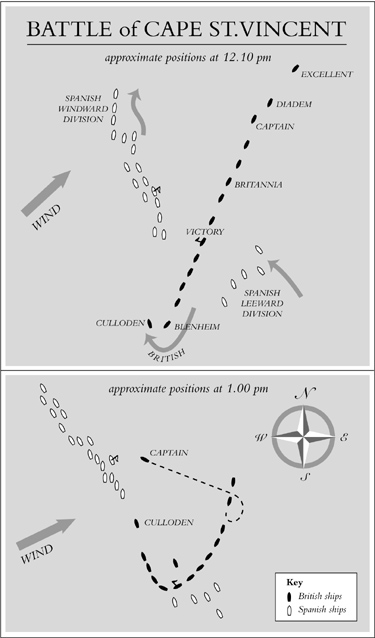Authors: John Sugden
Nelson (2 page)





Nelson was once Britannia’s God of War
And still should be so, but
The tide has turned;
There’s no more to be said of Trafalgar.
’Tis with our hero quietly inturr’d.
Lord Byron,
Don Juan
‘N
EVER
,’ recalled secretary John Barrow of the Admiralty, ‘can I forget the shock I received on opening the board-room door the morning after the arrival of the despatches, when Marsden called out, “Glorious news! The most glorious victory our brave navy ever achieved – but Nelson is dead!”’
1
To the British people, and many others fighting Napoleon, the death of Nelson in 1805 was one of those ineffaceable events that live as long as memory. The nation won its greatest naval victory and went into mourning. As Josiah Wedgwood the younger remarked, ‘grief and regret’ were ‘so general and so strong as quite to check and abate the delight the victory would otherwise have created in all our bosoms’.
2
Britons of every stamp remembered where they heard the news and the thoughts it inspired. The essayist Charles Lamb, no admirer of public persons, confessed to have been a follower of Nelson ever since he had seen him walking in Pall Mall ‘looking just as a hero should look’. Now, he felt ‘very much cut about it indeed’ because ‘nobody is left of any name at all’. The Wordsworths were in their native Lake District. Dorothy burst into tears, while her brother refused to believe that Nelson was dead until he had run into a Patterdale inn to confirm
the tidings. A partially unreconstructed radical, William Wordsworth did not approve of all that Nelson had done, but reflected deeply enough to compose a poetic tribute to ‘the happy warrior’.
3
Coleridge was in Naples when the news reached him. ‘When he [Nelson] died it seemed as if no man was a stranger to another, for all were made acquaintances in the rights of a common anguish,’ he wrote. ‘Never can I forget the sorrow and consternation that lay on every countenance . . . Numbers stopped and shook hands with me, because they had seen tears on my cheek and conjectured that I was an Englishman, and several, as they held my hand, burst themselves into tears.’ But it was that other old pantisocrat, Robert Southey, who perhaps best captured the national mood. ‘The death of Nelson was felt in England as something more than a public calamity,’ he remembered from the perspective of another eight years. ‘Men started at the intelligence and turned pale, as if they had heard of the loss of a dear friend. An object of our admiration and affection, of our pride and of our hopes, was suddenly taken from us, and it seemed as if we had never, till then, known how deeply we loved and reverenced him.’
4
That huge sense of loss manifested itself in a torrent of memorabilia and a multiplicity of monuments. Horatio Nelson, the Norfolk commoner, was raised in stone like the heroes of antiquity. Great columns, arches and statues were erected in far distant places. Some, though weathered or crumbling, still stand as mute testimony to the great debt the British public felt they owed the man now dead.
More than thirty substantial monuments were created in a vast and enduring surge of grief and pride. State patronage contributed, but most of the memorials depended upon public subscriptions and private enthusiasm, and took many forms. Alexander Davison, Nelson’s friend and prize agent, planted trees at Swarland in Northumberland to represent the positions of the ships in the battle of the Nile. A rough granite pillar, twelve feet high, was hauled on rollers from Aird’s Bay in Scotland by local iron-workers and erected on a hill at Taynuilt in Argyll and Bute. Twelve hundred men of the Sea Fencibles (a kind of naval home guard) were reported to have thrown up a twenty-foot triumphal arch at Cork in Ireland in just five hours on 10 November 1805, and a high tower built on Portsdown Hill overlooking Britain’s greatest naval base at Portsmouth was financed by veterans of the battle of Trafalgar.
5
The history of these monuments is instructive. They did more than remind new generations of a dead hero. They represented the nation
itself and an uncomplicated patriotism that for long sustained it. The citizens who raised those stones saluted a man who had rescued them from foreign domination. He stood for freedom and national endeavour. He was the very epitome of the greatness of Britain, a founder of its security and worldwide influence. Enemies certainly understood, whether rival powers or anti-colonialists. In 1940 Hitler talked about dismantling the famous column in Trafalgar Square and shipping it to Berlin as a concrete symbol of Britain’s defeat, while twenty-six years later Irish republicans blew up the impressive pillar and statue that had been a focal point in Dublin for more than a century. Both Bridgetown in Barbados and Montreal in Canada have talked about moving their huge Nelson statues to obscurer locations, where they are less capable of offending nationalist sentiment.
Even in Britain changing political attitudes to the state have rebounded upon the Nelson memorials. During the nineteenth century, when the admiral enjoyed a tremendous popular appeal, the statues in Glasgow and Trafalgar Square became places of pilgrimage and venues for radical protest. But more distant and sceptical generations allowed many of the monuments to decay, and not so long ago the relatively unadorned statue unveiled in Birmingham in 1809 was threatened by doctrinaire city councillors. The city’s first public statue, the Birmingham monument had been financed by a true cross-section of the community, and even its triumphalism was moderated to appease local Quaker sentiment. But for these modern critics Nelson had become nothing more than an embarrassing war monger and the symbol of an unsavoury empire.
Biographies of Nelson are also monuments, and equally reflect shifting opinion. The first major biographies were largely compilations, often reproducing badly bowdlerised chunks of primary material with little in the way of synthesis or analysis to act as a guide. Like the stone pillars their duty was to commemorate, and most that put the hero in a poor light was exorcised. In the words of one of the more competent scribes, it was Nelson’s ‘ardent love of country, his fervent attachment to his profession, [and] his acute skill and accurate judgement in nautical affairs’ that alone concerned the historian. So, at least for a time, also thought James Harrison, hired by Nelson’s former mistress, Lady Hamilton, to produce the two-volume
Life of the Rt Honourable Horatio, Lord Viscount Nelson
in 1806. Information furnished by her ladyship and other associates of Nelson lent Harrison ‘a considerable store of novelties’, among which treasures
were revealing love letters that the author subsequently published anonymously to his patron’s disadvantage. But the biography itself, though impaired by a spite towards Nelson’s wronged wife that led her to denounce it as ‘the basest production that ever was offered to the public’, generally eschewed controversial ground in favour of the story of a selfless patriot.
6
It was James Stanier Clarke, librarian and chaplain to the Prince of Wales, and Dr John McArthur ‘of Horndean, Hampshire’ (as he signed himself) who supplied what came to be regarded as the standard life, however. Their ponderous twin tomes entitled
The Life of Admiral Lord Nelson
were published in 1809. Based upon contributions from many of Nelson’s friends, colleagues and relations, as well as papers still held by his wife and brother, the book claimed great authority. The ‘editors’ were in a position to learn much about their subject. Noted for his skill with a sword rather than a pen, McArthur may have met Nelson as early as 1782 and certainly served him as prize agent in the Mediterranean during the 1790s. Both men had edited the
Naval Chronicle
, an on-going miscellania of matters afloat that had published a fragment of autobiography written by Nelson in 1799.
In that self-congratulatory fragment Nelson pointed the way for his biographers, representing his life as an exemplification of the maxim ‘that perseverance in any profession will most probably meet its reward’, and omitting most that did not relate to heroic deeds, stalwart service and public duty. His sketch exaggerated some of his achievements and denied the considerable nepotism that had lubricated his career. No self-effacing hero, Nelson had always played to his public, proclaiming himself its champion and inviting idolatry. As the epigraphs to the following chapters show, he did not mistake his constituency. The admiral had his critics but the British public responded rapturously.
The full biography by Clarke and McArthur was hardly more critical. Frequently analysis and coherent narrative were abandoned in favour of doctored selections from the admiral’s correspondence. Although the authors professed to expose ‘the private feelings and motives, as well as the great principles of his public and professional character’, they trod warily – necessarily so when so many of the dramatis personae were still alive. McArthur probably knew about the mistress Nelson had abandoned in the Mediterranean, but saw no virtue in publishing what could only have been deeply repugnant to
Lady Nelson. When it came to the admiral’s notorious affair with Emma Hamilton the plea of ignorance failed, so the authors merely declared the subject off limits. Henceforth, they said, their book would be ‘exclusively devoted to his more splendid public character’.
7